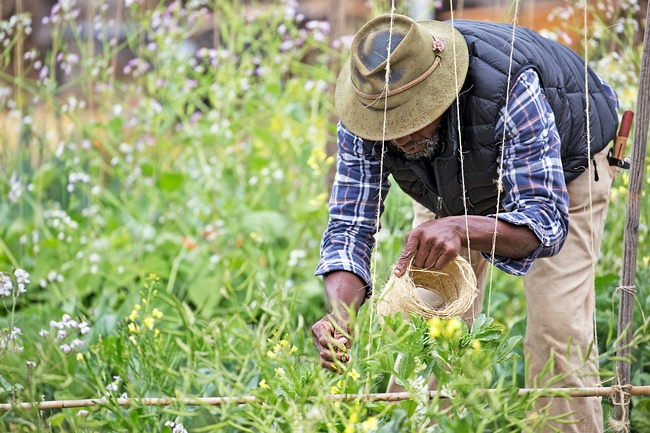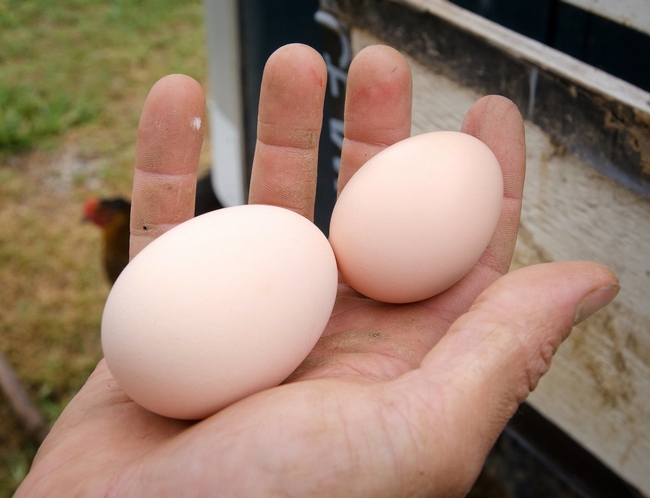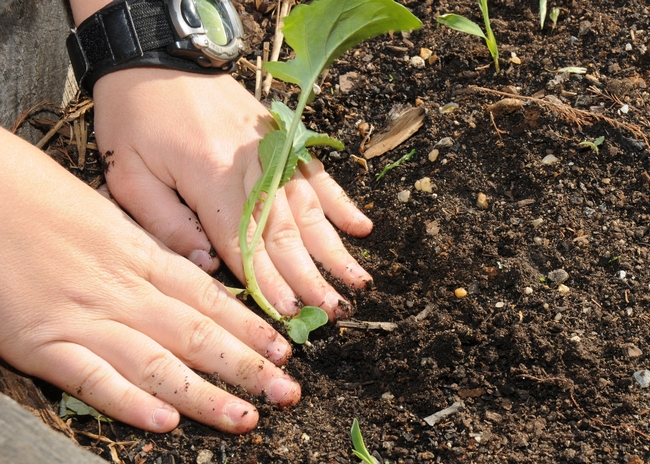
Posts Tagged: Urban Farming
Smoke and ash from wildfire may have lingering impacts in food production
A summer of smoke and ash in many parts of California has raised questions about the safety of produce growing on farms and in the garden, eggs laid by chickens who peck around in ash-laden areas, and remediation needed to safely and effectively grow food in the future.
UC Agriculture and Natural Resources brought together experts who have researched the effects of previous fires' fallout and studied soil contaminants to share their insight in a two-hour webinar now available on YouTube.
“The No. 1 health concern during a fire is smoke inhalation, and it's been well documented that wildfire smoke can negatively impact both the heart and the lungs,” said Claire O'Brien, a pharmacology and toxicology doctoral student at UC Davis. “However, the chemicals found in the smoke don't just stay in the air. They can deposit onto plants and into soil and water.”
Although every fire is unique, some generalizations can be drawn from research conducted following previous fires. UC Cooperative Extension food systems advisor Julia Van Soelen Kim detailed a study conducted following the October 2017 wildfires in Sonoma County and across the North Bay.
With the help of UC Master Gardener and community volunteers, the researchers collected over 200 samples of homegrown collard greens, lettuces, kale and chard that were exposed to wildfire smoke and ash. A subset of the samples were analyzed by a private laboratory.
“There was very low concern about chemicals on produce,” Van Soelen Kim said. “No samples had detectable levels of lead, arsenic, mercury or chromium. And that's a huge sigh of relief.” However, analytical results vary by site, site history and by fire event, and few have pre-fire baseline data to compare with.
Van Soelen Kim said basic food-safety practices should be followed when preparing to eat food grown in a home garden, regardless of ash or smoke contamination.
“You should always wash your hands before and after harvesting, and wash your produce in running water to mitigate any kind of potential risk,” she said.
Are backyard chicken eggs safe to eat?
Another study outlined at the webinar used a similar process to determine whether there might be contaminants in the eggs laid by backyard poultry that live and feed in areas exposed to wildfire ash and smoke.
Scientists know from previous research that chickens exposed to lead in their environment can produce eggs with high lead content and that heavy metal content of ash from urban wildfires is higher than from rural wildfire.
“We combined those two pieces of research with what we know that chickens do all day: they peck at the ground for hours on end,” said Todd Kelman, a veterinarian in the School of Veterinary Medicine at UC Davis. “That makes for a pretty good hypothesis that urban wildfire could pose a risk for the production of eggs and poultry that contain heavy metals.”
Kelman and his team put out a call for eggs from backyard poultry and received samples from 344 premises in fire-affected and non-fire-affected areas of California.
Surprisingly, egg samples that contained higher lead levels came from parts of the state that were not directly impacted by ash and smoke.
“Did our data support our hypothesis that proximity to urban wildfire is a driving source for lead in eggs of backyard poultry? The answer is not so much,” Kelman said. “So, is it safe to eat eggs from your backyard poultry? We can't give you a definitive answer to that question. But we do suggest you assess your risk and reduce the risk of contamination.”
Practices that reduce the risk include keeping chickens off the ground, using a chicken feeder that prevents spillage onto the ground and making calcium readily available, for example in the form of oyster shells, because calcium can prevent the absorption of lead. Making sure that chickens are provided uncontaminated water is also an important part of risk reduction.
For confirmation on the safety backyard chickens and their eggs, lab tests for eggs are available for $60 from the California Animal Health and Food Safety Laboratory at UC Davis, or chickens may be submitted to CAHFS for necropsy.
Are soils safe for growing food after a fire?
Fire effects on soil is another consideration in burned areas, said UC Cooperative Extension urban agriculture advisor Rob Bennaton.
“Fires heat topsoil layers. They reduce the amount of living micro-organisms at the site of the burn, and also affect organic matter and nutrients. Ash deposits over time may make soils more alkaline,” he said. “As a result of these combined factors, there are temporary changes in nutrient levels and the capacity for soils to exchange nutrients for optimal plant growth and nutrition.”
With proper land care and management, soils can be remediated over time.
“It won't happen overnight. Soils were developed over millions of years,” he said.
Some ways to improve safety when gardening in fire-affected areas including keeping the soil covered with wood chips or other landscape mulch to reduce airborne soil dust. Use drip irrigation to prevent up splash onto the undersides of growing vegetables. Promote good drainage, especially at the bottom of slopes to prevent the concentration of contaminants.
Lab tests are often needed to determine the soils' post-fire characteristics. “Don't guess, but test,” Bennaton said.
The UC Master Gardener Program can provide technical assistance to help home gardeners find resources for home soil testing, he said.
Additional resources and information shared during the webinar include:
Post-fire soil resources and soil testing information
- UCCE publication on Soils in Urban Agriculture with soil testing & sampling information
- The UC ANR Healthy Soils Website, which has many resources worth reviewing.
- Tips for Interpreting Soil Analysis
- UC Master Gardener of Sonoma County 2018 workshop video “Effects of fire on soil”
Post-fire food safety
- Research on produce safety and backyard chicken egg safety after the 2017 wildfires in California is available on this web page. To view a past webinar recording with these research findings, click this link.
- Poultry wildfire resources from the UC Davis School of Veterinary Medicine:
- Best Practices for Produce Safety After Fire
- Understanding Risk: A community guide for assessing the potential health impacts of locally grown produce exposed to urban wildfire smoke
Firewise and sustainable home landscaping design in the defensible space zone
- Visit the UC Master Gardener Program of Sonoma County firewise landscaping web page.
- For a recent firewise & sustainable design and maintenance video by the Resilient Landscapes Coalition.
Impact of smoke & ash on plants
Urban Agriculture Soil Information
Does Urban Agriculture Improve Food Security?
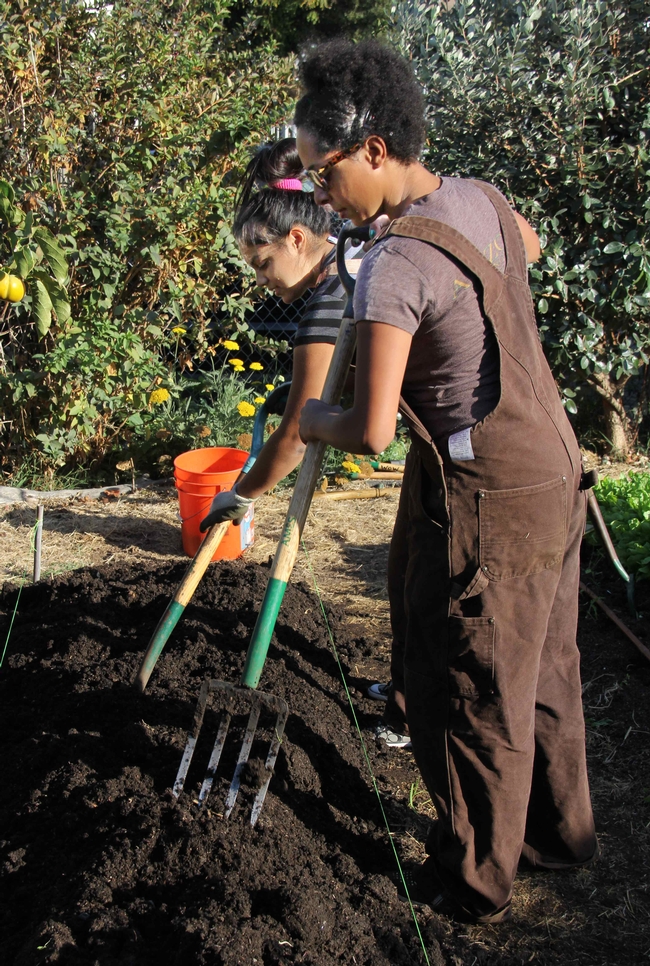
Without understanding the actual links between UA and food security or which specific characteristics, models or approaches reduce insecurity, urban policymakers and advocates risk backing policies that could have unintended consequences or negative impacts on vulnerable individuals and communities. We argue that in addition to more robust analyses that measure the actual social, economic, and health impacts of urban agriculture, and how they impact food security, it is important to understand which approaches to policy, governance and civic engagement support UA models that are effective in reducing food insecurity.
In general, we see three trends in current scholarship on UA in relation to community food security: (1) a focus on the production potential of urban lands, (2) individual case studies highlighting various nutritional, health, and other community benefits or outcomes from urban gardening initiatives, and (3) more critical analyses of UA through food justice and equity lenses. To this latter point, robust theoretical analyses have emerged critiquing the risks of UA when approached without an equity lens, potentially reinforcing structural injustices and racism and negatively impacting communities that ideally should benefit the most.
Deeper historical and structural challenges including poverty, racism, and divestment in specific communities and neighborhoods are increasingly being recognized as the root causes of the problem of unequal access to sufficient supplies of safe, nutritious, affordable, and culturally acceptable food facing cities. Designating land for agricultural use in urban areas may conflict with other city planning priorities around affordable housing, community economic development, or smart growth approaches associated with reducing urban sprawl and mitigating climate change, such as transit-oriented development. Because of the persistent legacy of systemic discrimination, it is neither inevitable nor guaranteed that urban agriculture will redress food system inequities; in fact, urban farms can sometimes lead to displacement through eco-gentrification. This is a particularly acute concern in areas experiencing housing pressures and population growth, such as the San Francisco Bay area and New York City.
Analyzing the intersection of food access and food distribution literatures reveals three key factors mediating the effect of UA on food security in the urban food system:
(1) the economic viability of urban farms (to sustain the provisioning of affordable urban produced foods)
(2) the role of city planning and policies in advancing racial equity through UA such as secure land tenure and public investment, and
(3) the importance of civic engagement to advocate for and hold cities and counties accountable to the needs of low-income communities.
We highlight examples from both the scholarly and gray literatures that demonstrate how UA can improve food access, distribution, and justice, in a way that supports both consumers and producers of food in cities. The gray literature in particular reveals many emerging and informal distribution networks for urban produced foods that would benefit from further academic study, such as gleaning networks, distribution apps, and online platforms.
The review concludes with a set of recommendations for researchers, practitioners, and policymakers who seek to create spaces in cities for food justice, equity, access, and sovereignty. Most notably we acknowledge that urban farms are producing a lot more than food; and that equitable planning, public investment and civic engagement are crucial elements in securing the long-term viability of urban farms. More robust analyses documenting the multifaceted benefits and risks of UA such as public health, food security, youth development, food literacy, eco-gentrification and environmental justice can help inform more equitable public policy and planning efforts.
Urban Farming Workshops Start Soon in Sacramento and San Diego
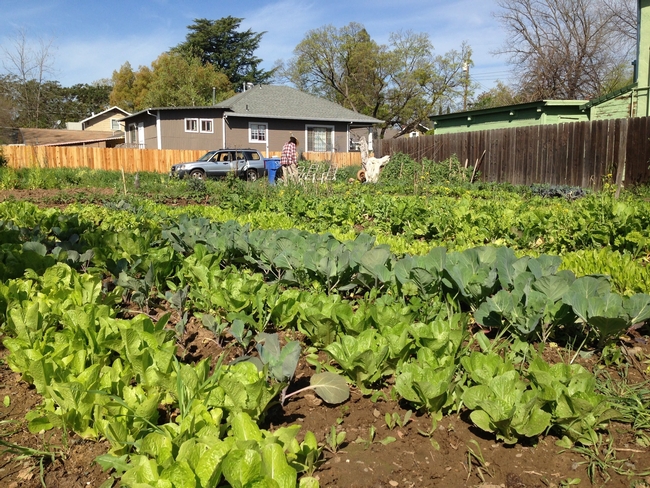
A UC Cooperative Extension (UCCE) team recently assessed the needs of urban farmers around the state, and found that they struggle with production, business, and marketing challenges, many of which are specific to the urban context of their farms. Additionally, many urban farmers are unaware of agricultural regulations, city zoning and permitting rules, food safety, soil quality issues, and pest quarantines.
To help new urban farmers get started effectively, and to help more experienced urban farmers improve their skills and profitability, the UCCE team is offering a series of four urban agriculture workshops in each of the Sacramento and San Diego regions. These communities have recently put policies in place to encourage urban farming, and many residents are getting involved. The workshops will be held at urban farm sites and will include farm tours and discussions with local urban farmers sharing challenges and success stories. The 2018 workshop series starts March 16 in the Sacramento area and March 23 in the San Diego area.
Workshop #1 will cover the legal basics of urban farming, including types of urban farm enterprises, zoning issues, soil testing, required permits and licenses, and an introduction to key local resources such as the Agricultural Commissioner and UCCE staff.
Workshop #2 will cover Marketing and Business Management for Urban Farms, including business planning, record keeping, market channel options, and an introduction to labor laws and risk management.
Workshop #3 will be about production considerations for urban farmers, focusing on water management, integrated pest management (IPM), and soil contamination/soil improvement.
Workshop #4 will cover pre and post-harvest food safety practices, using CDFA's Small Farm Food Safety Guidelines.
Farmers and potential farmers can take one or take all four of these workshops; each is $20 for a full day of expert speakers, participatory exercises, lunch and refreshments. Each workshop will be a one-day event.
Registration is open. Space is limited, so please sign up early.
Learn more about the workshops, as well as the 2017 workshop series' held in the Los Angeles and San Francisco Bay Area regions, and register here:
ucanr.edu/sites/UrbanAg/Urban_Ag_Workshops/
More UC urban farming resources: ucanr.edu/sites/UrbanAg/
Questions?
San Diego Series: Mary Redlin, Southern California Coordinator, mvredlin@ucanr.edu, 562-900-3041
Sacramento Series:Penny Leff, Northern California Coordinator, paleff@ucdavis.edu, 530-752-5208
August 19th is National Honey Bee Day: Dr. Elina Niño reminds us to help honey bees cope with pests
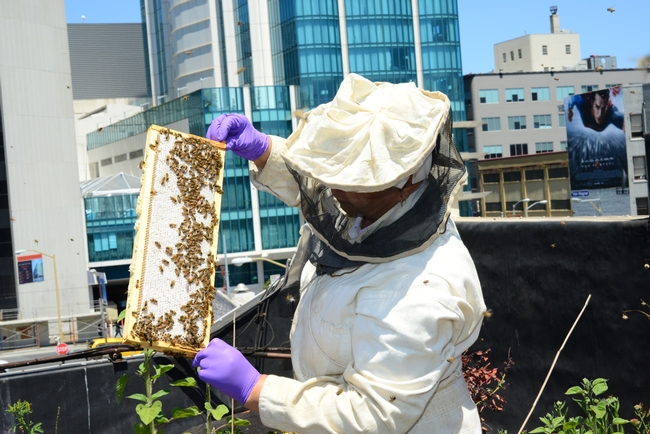
https://soundcloud.com/ucipm/help-honey-bees-cope-with-pests
To read the full transcript of the audio, click here.
Successful IPM in honey bee colonies involves understanding honey bee pest biology, regularly monitoring for pests, and using a combination of different methods to control their damage. Visit these resources for more information:
Sources for the Value of Honey Bees:
Flottum K. 2017. U.S. Honey Industry Report, 2016.
Start Smarter Part 1: Things I Wish I Knew When I Started Farming
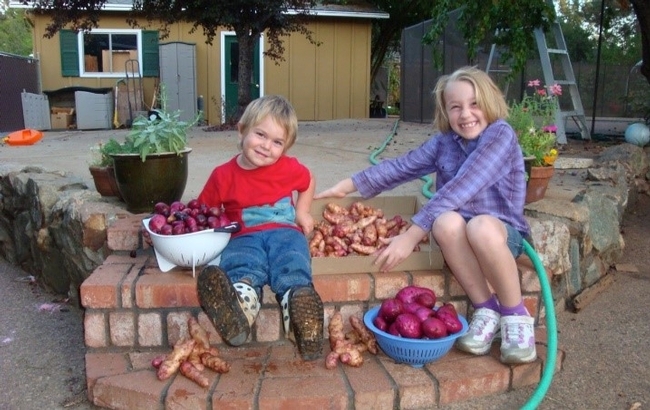
If I had it all to do over again, what would I do differently?
Practice: To start, I would educate myself by doing – work or intern on a profitable farm for at least one season. I can't tell you how many hours I wasted on inefficient harvesting when an experienced farmer could have trained me to do it a better, faster way.
Education: While I was learning how to do the hands-on work, I would take classes – farm business, farm management, farm marketing, etc. Taking classes taught by people with experience in the field gives a new farmer the opportunity to ask questions and have access to more information and resources. Farming is a unique business with its own language and challenges. Farm business classes can help a new farmer develop a realistic and informed business plan.
Business Perspective: I would not start with a homesteader perspective like the one I did. I had too many enterprises from the get go – chickens, goats, and 40+ vegetables. For a farm to be financially successful, it needs to be treated as a business, not a hobby.
Business Plan: I would focus more on marketing and financial goals. I would include the word “profit” in my mission statement. My original business plan focused too specifically on land use and crop production, environmental impact, and social involvement.
Banking: I did pretty well in this area. The following tips saved me a lot of stress during a financially dry period:
• Start with a separate farm business checking and personal checking account
• Do not take on debt
• Keep track of everything on some version of accounting software.
Market Research: I would do market research on what to grow. I would takes notes on price and what products were in demand at farmers' markets and other outlets where I intended to sell. I would contact produce managers and farmers' market managers and ask them what they wanted. I would watch market customers to see where they shopped. I would note which products sold out by the end of the market. As it was, I started out growing what I liked to eat – and more! If I had done my market research, I could have wasted less time on crops that were not in demand or were too inexpensive for me to be competitive on pricing.
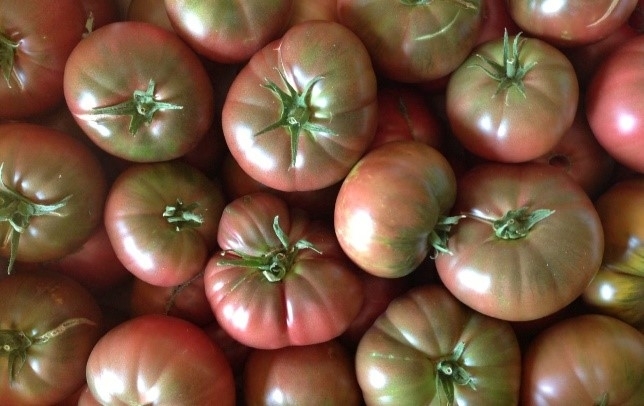
See Starting Smarter Part 2: Lessons I Learned Along the Way next week to read about Land, Equipment, Labor and more.
Check out the New Farmers and Resources tabs on this website information and some useful information:
Foothill Farming: http://ucanr.edu/sites/placernevadasmallfarms/

